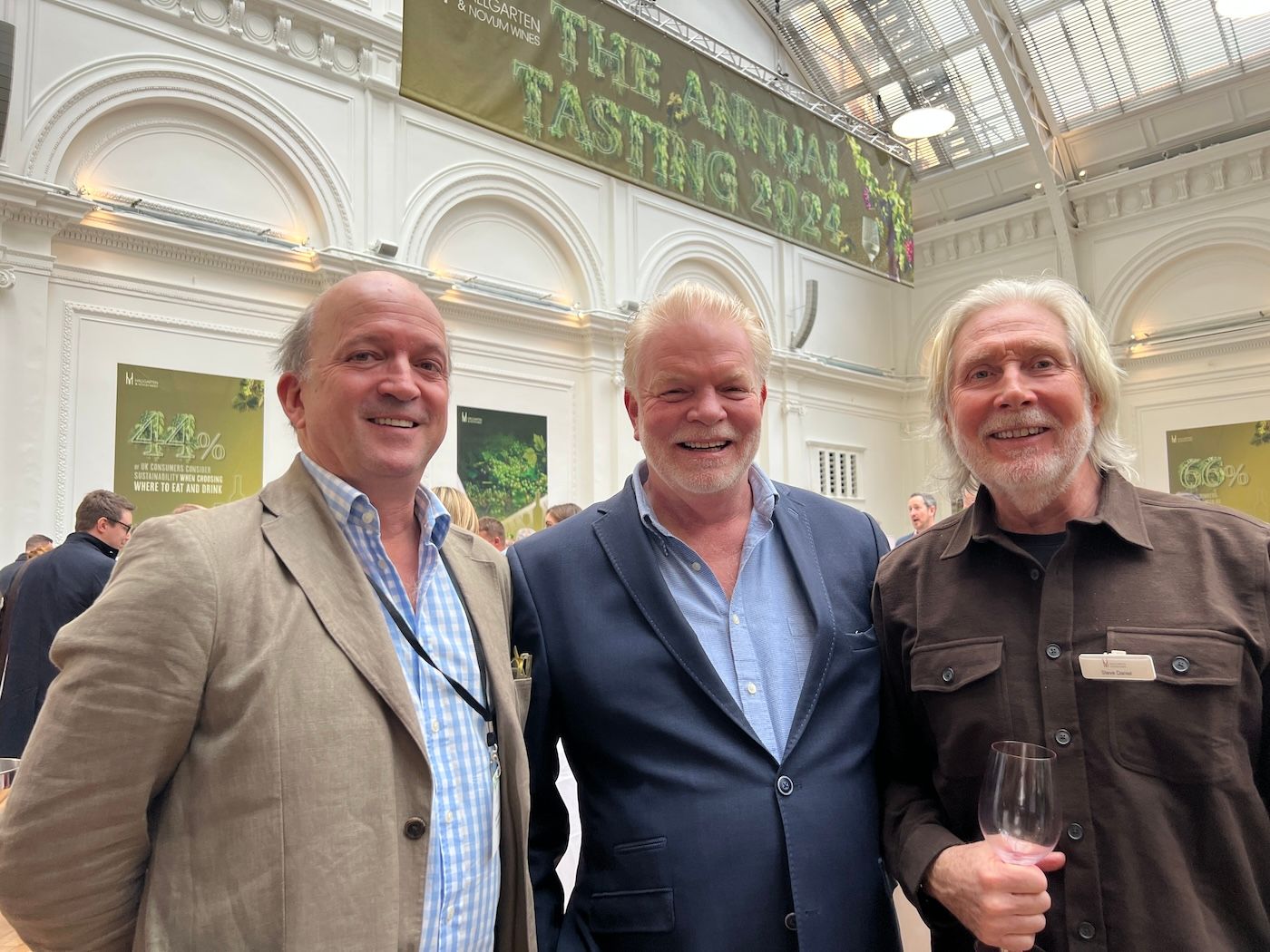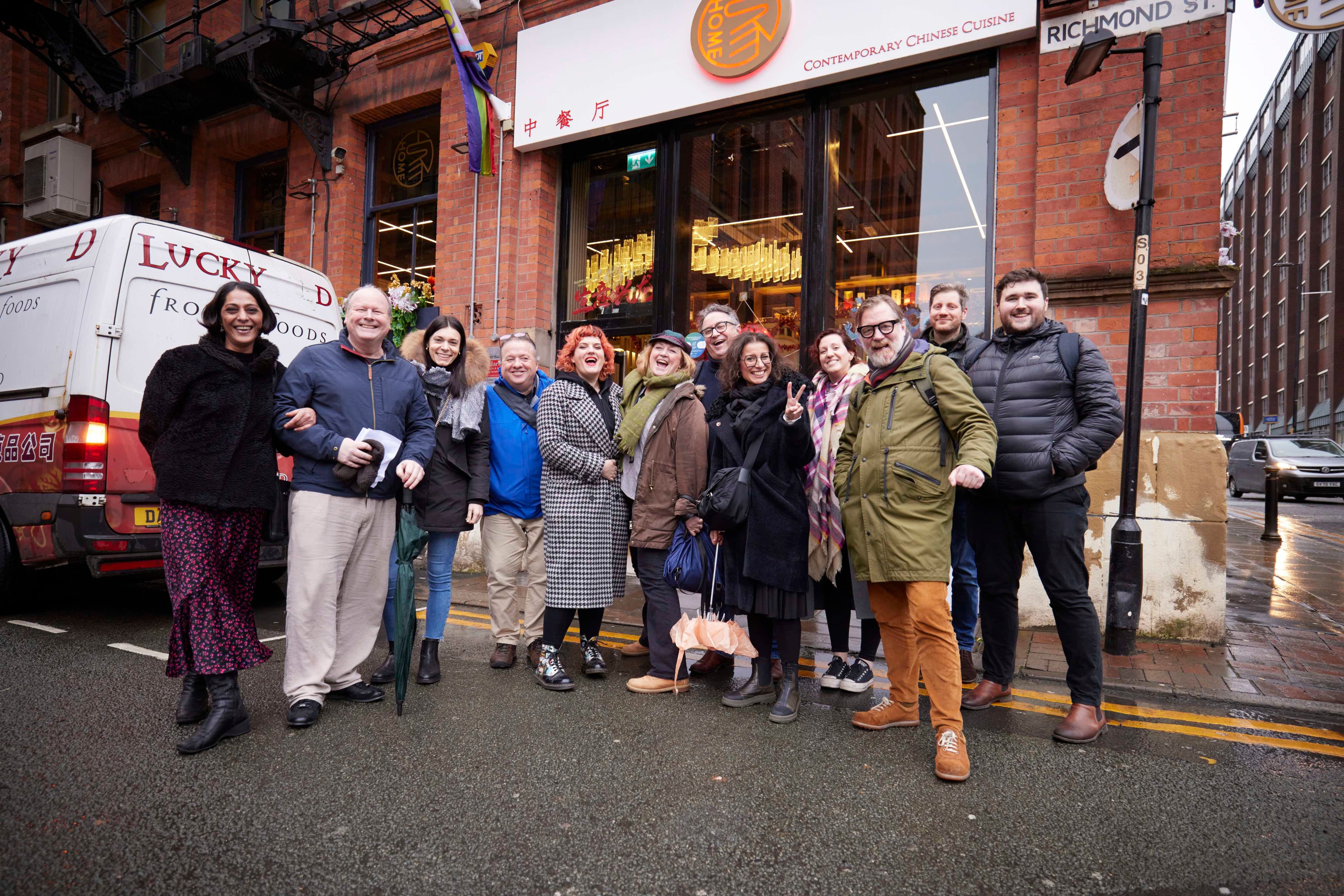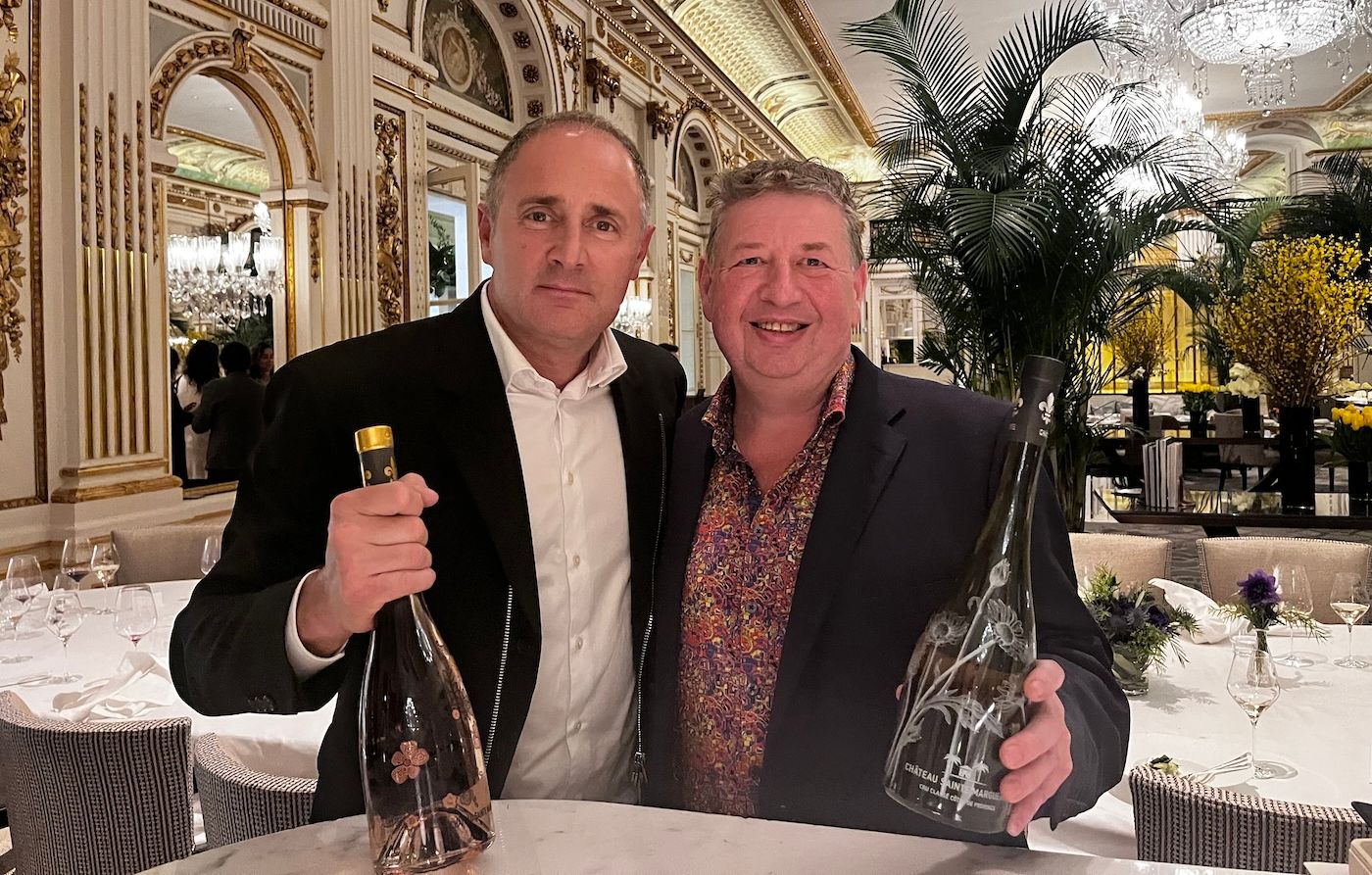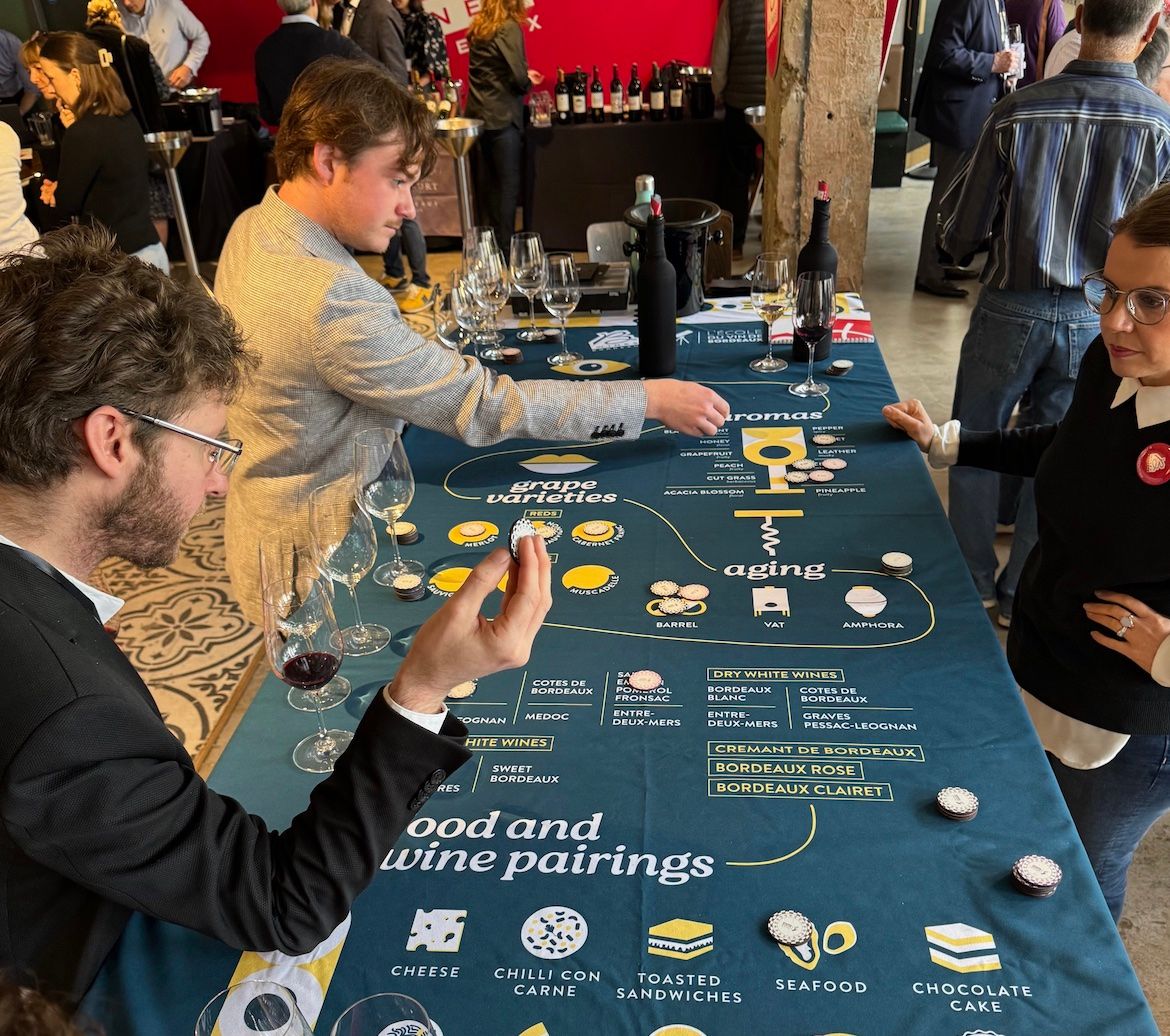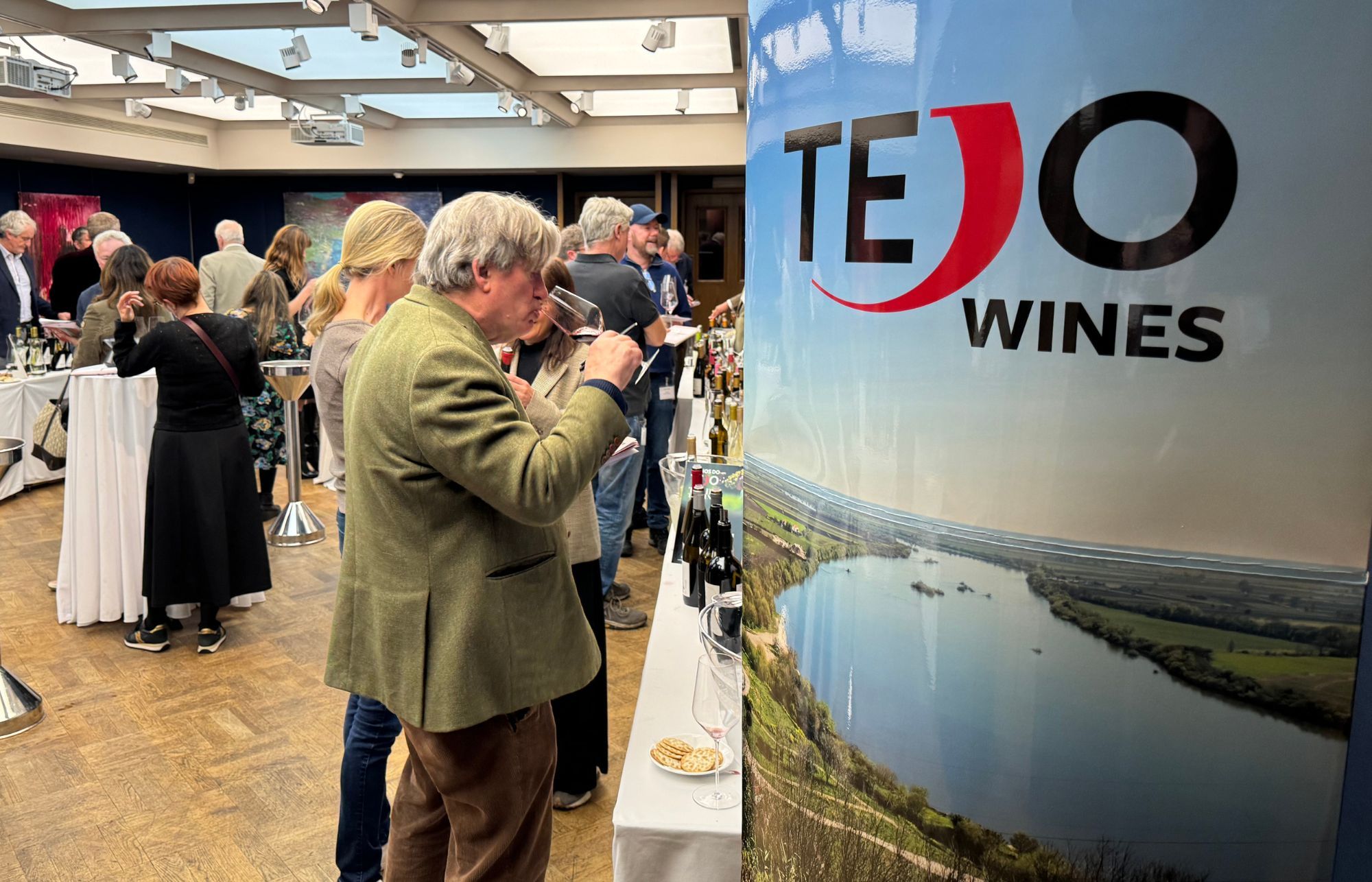“New World-wise Hallgarten & Novum has been particularly busy with acquisitions from South Africa and Australia.”
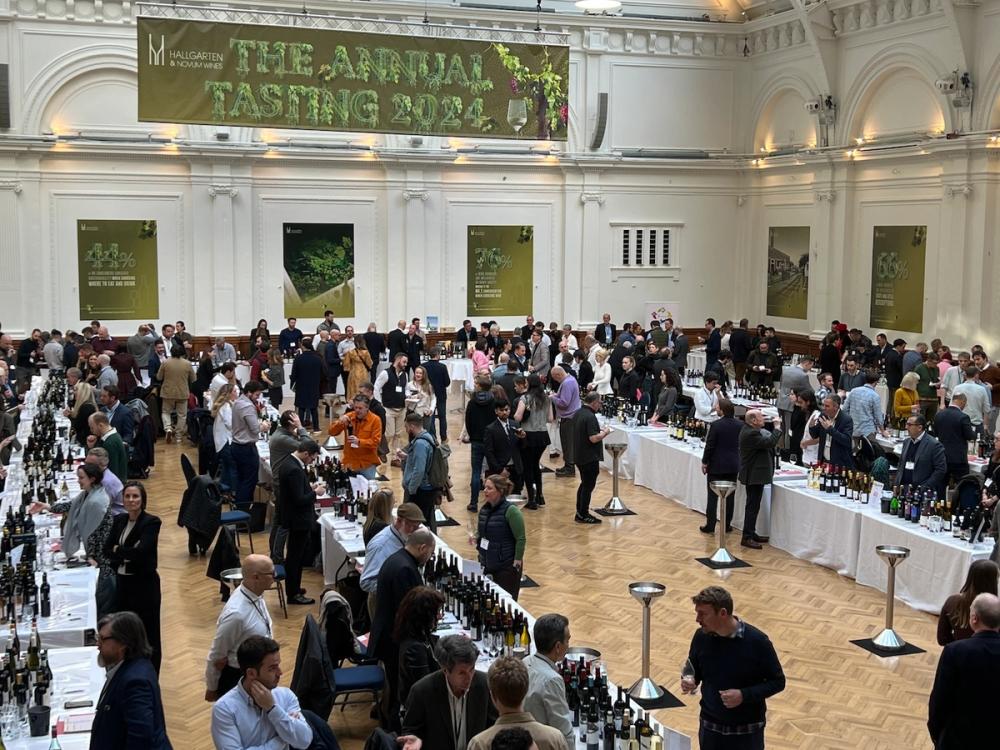
And they’re off! Half an hour into Day 1 and London’s Lindley Hall is already buzzing at the Hallgarten & Novum tasting
Last week’s Hallgarten & Novum Wines annual tasting marked the 91st year of trading but the first under new ownership, Coterie Holdings, led by ex-Bibendum CEO Michael Saunders. How the new structure will work, particularly with HN’s new-found access to the Lay & Wheeler fine wines portfolio will be revealed in time but, in the short term, what was glaringly evident was the number of new producers who have joined the fold, many only in the past few weeks.
“We’ve come across with Michael,” was said more than once by some of the 26 new wine estates that have joined HN Wines, showing as they did at the tasting a remarkable 160 new wines out of the total 750 on show. A reason given by another estate for leaving a rival major importer was their loss of credit insurance last year.
Concentrating on the ‘new kids on the block’
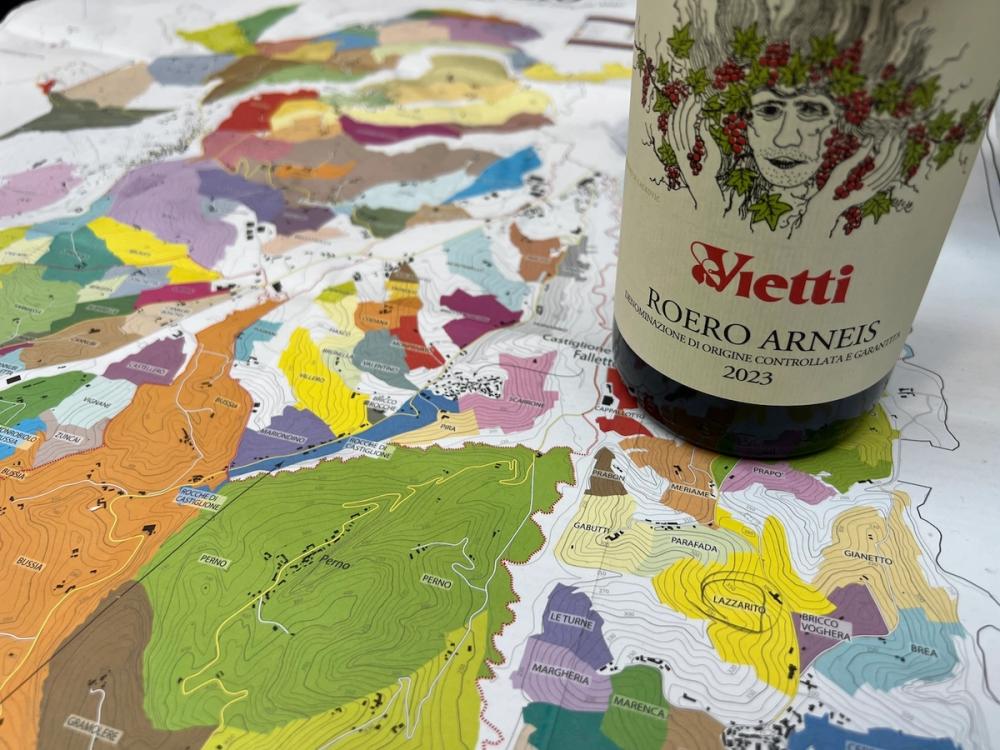
Vietti has just joined Hallgarten & Novum from Bibendum
Piedmont producer Vietti should need no introduction to wine buyers. Previously at Bibendum, this iconic estate had Massimiliano Vaira showing eight wines from its sublime, fennel flower-infused Roero Arneis 2023 through to its single vineyard Barolos from 2018 and 2019. Its two Barbera d’Albas (‘Trevigne’ and Vigna Scarrone) were showing well, although with both from the hot 2021 vintage they were highly concentrated and high in alcohol 14.5%-15% abv – Barbera being a grape that loves a hot summer. If I had to pick one wine from their range it would be the Nebbiolo ‘Perbacco’ Langhe 2020 (£23.65) which is effectively declassified Castiglione fruit, blended after a selection in the winery and then aged only in barrique. Light, elegant, textural, it would be hard to find a better value straight Nebbiolo, coming as it does from such an attractive, approachable vintage, that still has the backbone to age.
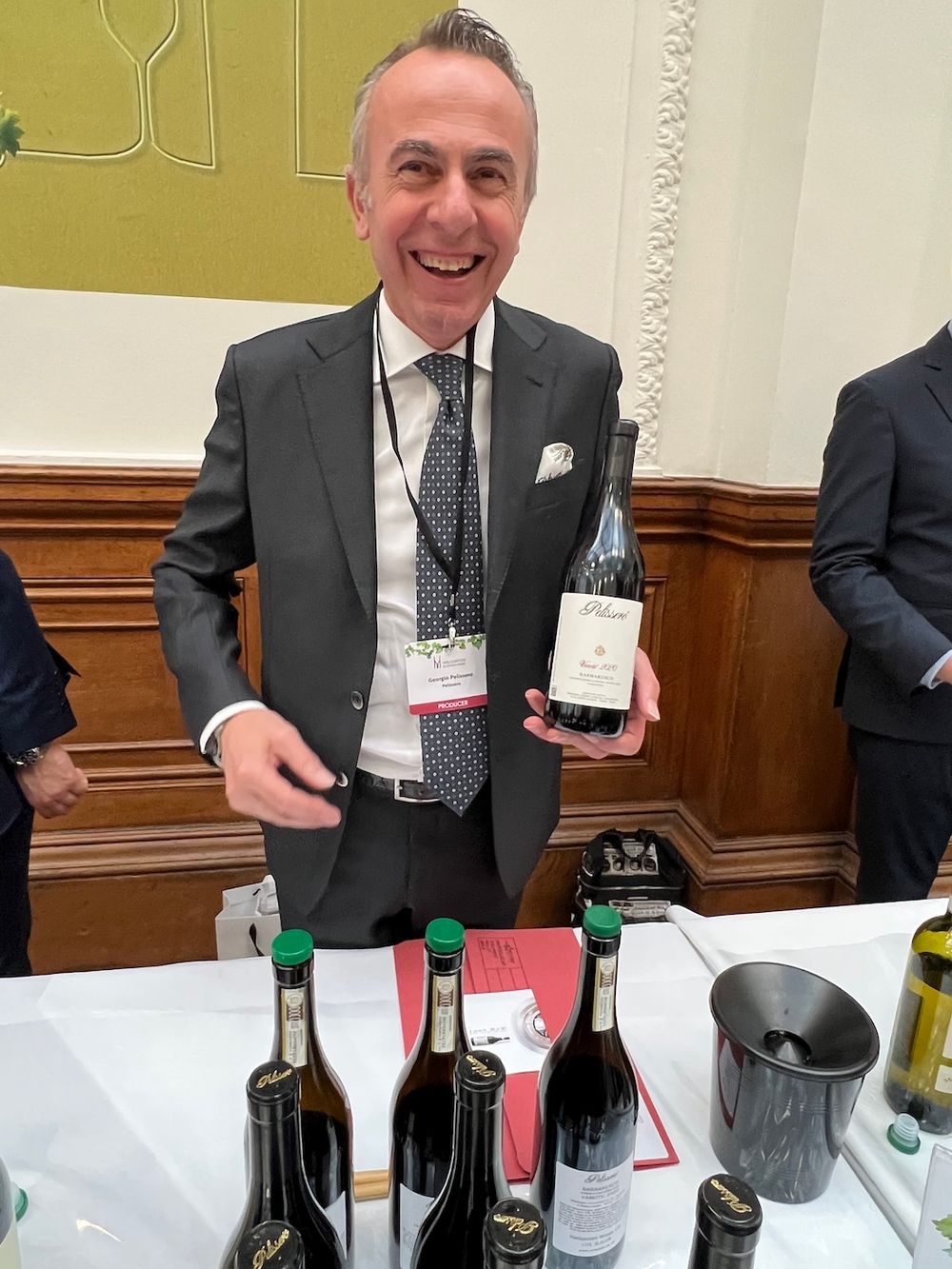
Giorgio Pelissero only showed three wines but they were all sheer class
Also from Piedmont, Pelissero was showing three old school Barbarescos. This estate has been out of the UK for a couple of years and seemingly didn’t get the memo about Barbaresco becoming lighter and ready for immediate drinking. Not that these wines weren’t elegant or beautifully crafted, they were, it’s just that they had really forward tannins – the kind that I think Barbaresco ought to have, especially in a gastronomic context. All three wines were from the same stunning 2020 vintage and although Tulin and Vanutu were sensationally powerful I preferred Barbaresco Nubiola 2020 (£34.80). This is a classic style Barbaresco made from a blend of six single vineyards and was glorious from its herbal charged aromatics through its layers of flavour, held together by talc-fine tannins. Pass the ragu.
Sticking with the Old World, and two new Burgundy producers.
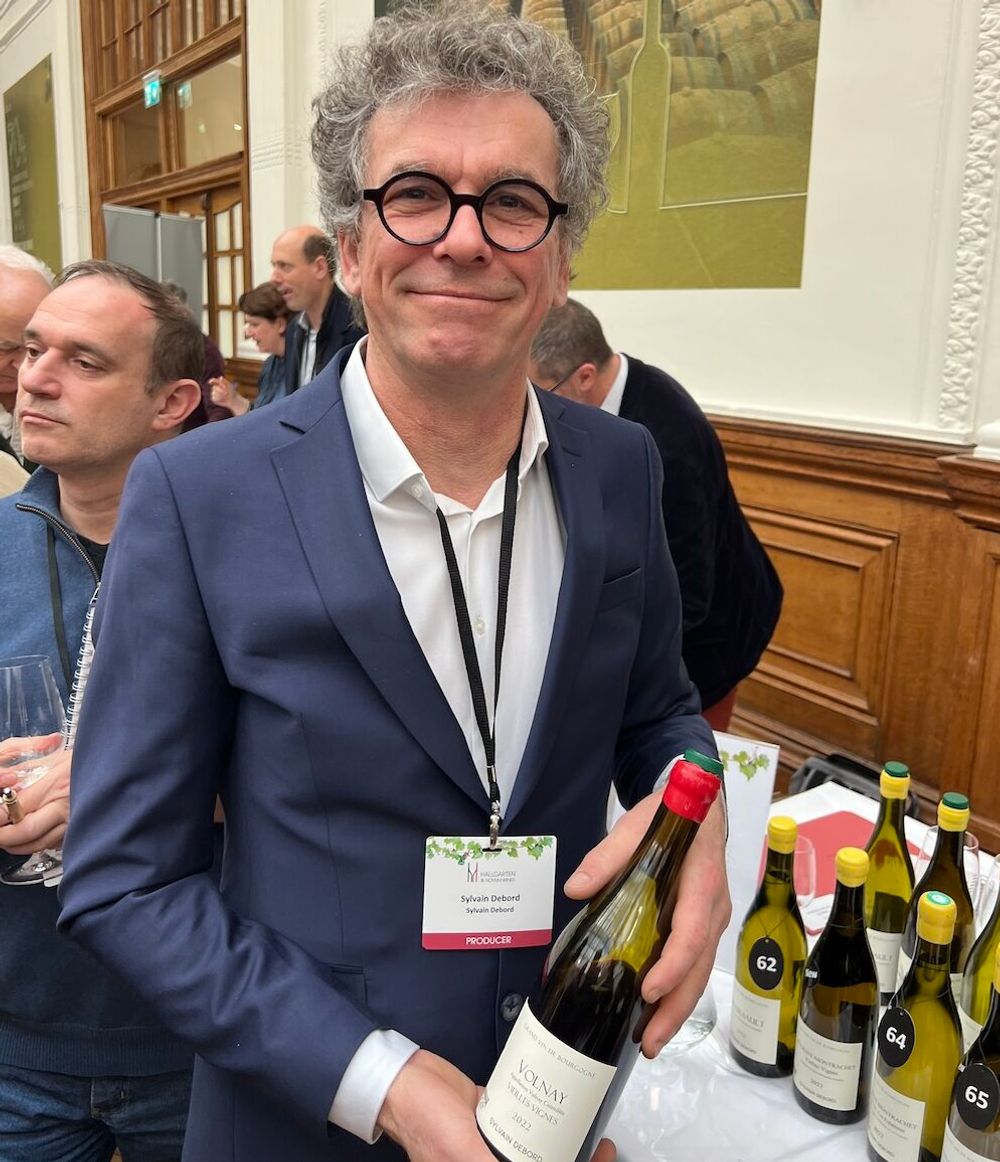
Sylvain Debord – Potel’s winemaker but also with his own label
The first is Sylvain Debord which is the eponymous estate set up four years ago by Debord who is best known for being Nicolas Potel’s winemaker at Domaine de Belene since that estate was set up in 2005. He showed eight wines from the 2020, 2021 & 2022 vintages, all classic, terroir-driven wines with large format casks used to good effect – bags of flavour and technique never masking the fruit. His three ‘old vine’ village wines from Puligny-Montrachet, Volnay and Chassagne-Montrachet were all outstanding the Chassagne-Montrachet Vielles Vignes 2020 (£80.13) from 65 year old vines being standout on the whites for freshness and balance and the Volnay Vielle Vignes 2022 (£45.57) outstanding for the Pinots, showing 2022’s solar characteristics but with good grip. Bizarrely approachable for a young Volnay but still a corker.

Ropiteau Frères showed eight new wines
Meursault-based negociant Ropiteau Frères which is a part of the Boisset Group has been out of the UK for some years, a Meursault specialist, six of the eight wines shown were white with the standout wine being the village Puligny-Montrachet 2022 (£78.48) which benefitted from a lack of lees stirring which is de rigeur in a hot vintage such as 2022 – but with the wine exuding a fresh, clean, crisp and gastronomic minerality. With the winery producing 25 cuvées from 20 villages, there’s a lot to call on going forwards.
New World-wise Hallgarten has been particularly busy with acquisitions from South Africa and Australia although, because of harvest times very few of the Southern Hemisphere winemakers were present at the tasting.
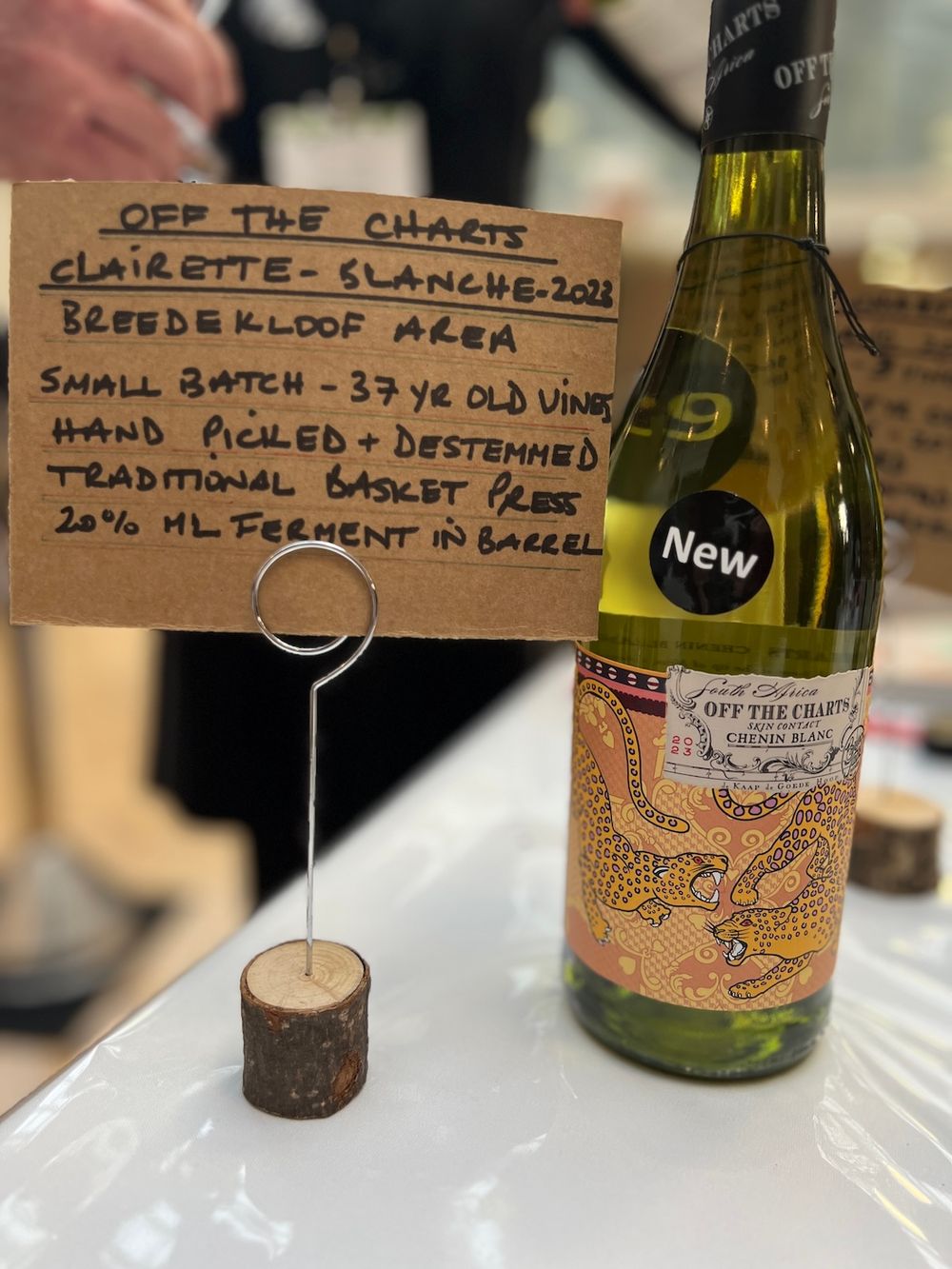
Love this! How to save your voice at a busy tasting – all the info you need from the winemaker
For pure ‘bang for your buck’ Bruce Jack’s four wines on the ‘Off the Charts’ label delivered in spades with pure varietal expression, price point and branding that would work particularly well in off-trade and gastropubs. Top marks too for the smartest presentation of the wines’ technical information I have seen at a big tasting like this – great for access when the stand is busy. There’s a Skin Contact Chenin Blanc, Viognier and Pinotage but the wine that stood out for me was Clairette Blanche Skin Contact ‘Off the Charts’ Breedkloof 2023 (£11.08) which owed its gorgeously textural mouthfeel to spending six months in 228-litre French oak.

Pieter Casters – building his own large format casks
Pieter Casters at Leewuinkuil Family Vineyards, Swartland confessed to banging on Hallgarten’s door for a while since his wines have been out of the UK (last seen with New Gen Wines). Again, representing terrific value and benefitting from neat use of large format casks which he built himself, and some input from Vouvray’s Vincent Carême. The Chenin was great, as you might expect with that input, and the two ‘Reserve’ blends were impressive. The wine I came back to was his Cinsault Rosé, Swartland, 2023 (£11.28) which was whole bunch, 30 minutes on the skins and fresh, textural and saline-edged on the finish, a result of his clay soils which are apparently so salty you can taste it direct off the earth.
A deal done with Darren Rathbone means that Hallgarten has managed to pick up three mighty Australian wine estates in one. Since buying Yering Station in 1996 in the Yarra Valley, Rathbone has expanded to two other cool climate Australian regions – Mount Langi Ghiran in the Grampians since 2002 and Margaret River’s Xanadu since 2005. Unsurprisingly Rathbone produces 12 Chardonnays across his estates with Cab Sauv a focus in Margaret River and Pinot in the Yarra.
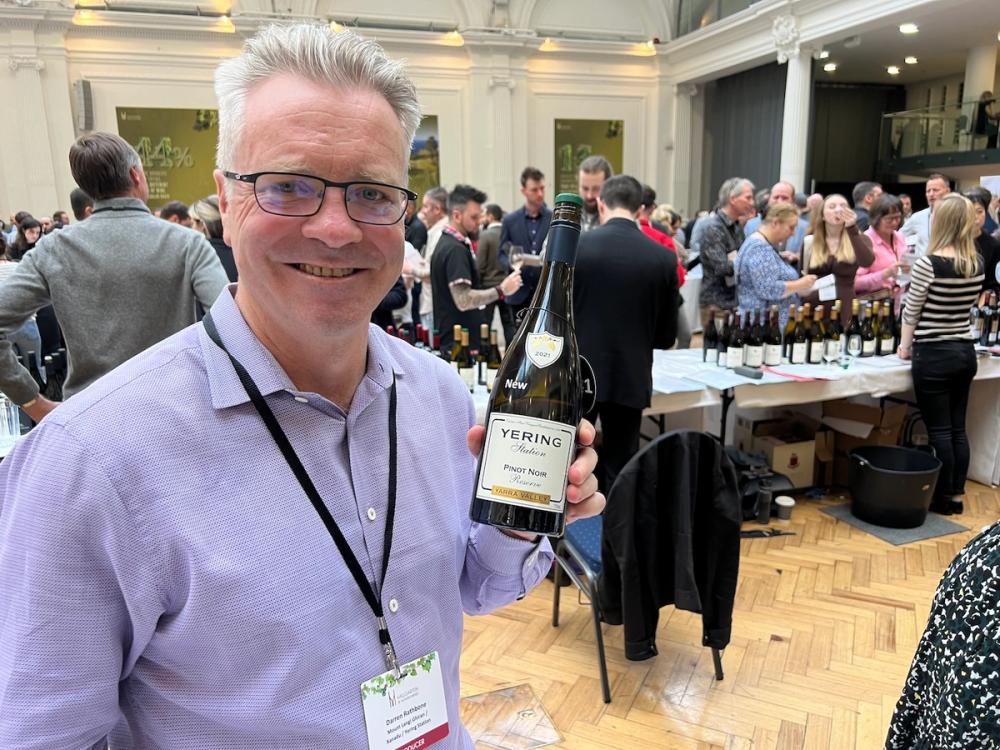
Three in one: Darren Rathbone – head of three of Australia’s best cool climate estates
Mount Langi Ghiran is in Grampians’ Shiraz country and very impressive they are too with a freshness and lightness of touch that I enjoyed most in Shiraz ‘Cliff Edge’ 2020 (£18.10) which is a blend made from various plots on the estate and had a winning blueberry and black pepper profile.
Rathbone has three or four grades of Chardonnay at his estates not dissimilar to a Burgundian model. At Xanadu there’s lots to like with impressive Cab Sauv augmented by dashes of Malbec, Cab Franc and Petit Verdot. The Chardonnays are graded according to provenance, ageing treatment and so on. My preferred was the reductive-style Chardonnay Reserve 2021 (£52.80) made from gin-gin clone’s small bunches, vines planted in 1977, and the wine aged in 40% new French oak which lent it a sturdy structure and length. Nice intensity and a lick of gunflint, which isn’t my favourite Chard. style but here the technique didn’t dominate the fruit.
There were nine wines from Yering Station in the Yarra Valley a terrific Pinot Noir 2023 at under £20 which easily goes head to head with what you can get from Burgundy at that price point and a more premium Pinot Noir Reserve 2021 (£52.80) which comes from what Rathbone describes as “the best vintage ever” and had a wonderful marriage of fruit power and oak. The Chardonnays are worth tasting – particularly the Chardonnay 2022 (£19.79), excellent value.

The only two zero alcohol wines in Hallgarten & Novum’s portfolio
Australia’s most popular Australian white wine bought in Australia is Brown Brothers Moscato which is fragrant, sweet (128 gms per litre/ rs) and has a vibrancy and zip to it. It is also just 5.5% abv which is significant because when removing the alcohol to produce Moscato ‘Zero’ 2022 (£7.52) the winery has managed to preserve the wine’s vinous quality – in fact, sweetness apart and they are sweet! (120 gms per litre/ rs), I have not tasted a zero-alcohol wine that has tasted more like a wine – it’s got a great mouthfeel. While the wine won an IWSC silver medal both Moscato Zero and its red equivalent Cienna ‘Zero’ (£7.52) (104 gms per litre/ rs) were winners in the Alcohol Free Awards. These are the only Zero alcohol wines in Hallgarten’s portfolio. The UK’s new duty system favours these two wines but if the government brings in a sugar tax they’re screwed! Brown Brothers joined Hallgarten from Enotria&Coe a few weeks ago.
Other notable new wines

New, and launching in April, from Feudi di San Gregorio’s estate in Tuscany
Feudi di San Gregorio the largest winery in Campania and the whole of South Italy has been a mainstay of Hallgarten’s catalogue for many years. The three top whites that are a selection of the best vineyards: Falanghina del Sannio ‘Serrocielo’ 2021, Greco di Tufo Cutizzi 2022 and Fiano di Avellino ‘Pietracalda’ 2022, all from the hot, low-yielding vintage of 2022, were all showing particularly well on the day. It was three new wines that caught the eye, however – the Rosato ‘San Greg’ 2023 (£18.30) which is a serious and textural 100% Aglianico rosé – impressive to clock in at just 12.5% in Campania; Dubl Brut Edition II NV (£26.49) is the follow-up to last year’s Spumante made from 100% Falanghina, Edition II is made from 100% Greco and left for 24 months on lees and was fresh, aromatic and lively; look out too for a new red from Campo Alle Comete, Feudi’s Bolgheri estate, Torre Alle Comete Bolgheri Rosso Superiore 2021 (£ tbc) which is a blend of Cabernet Franc and Cabernet Sauvignon from 70-90 year old vines which was a bit of a ‘chunky monkey’ but delicious all the same.
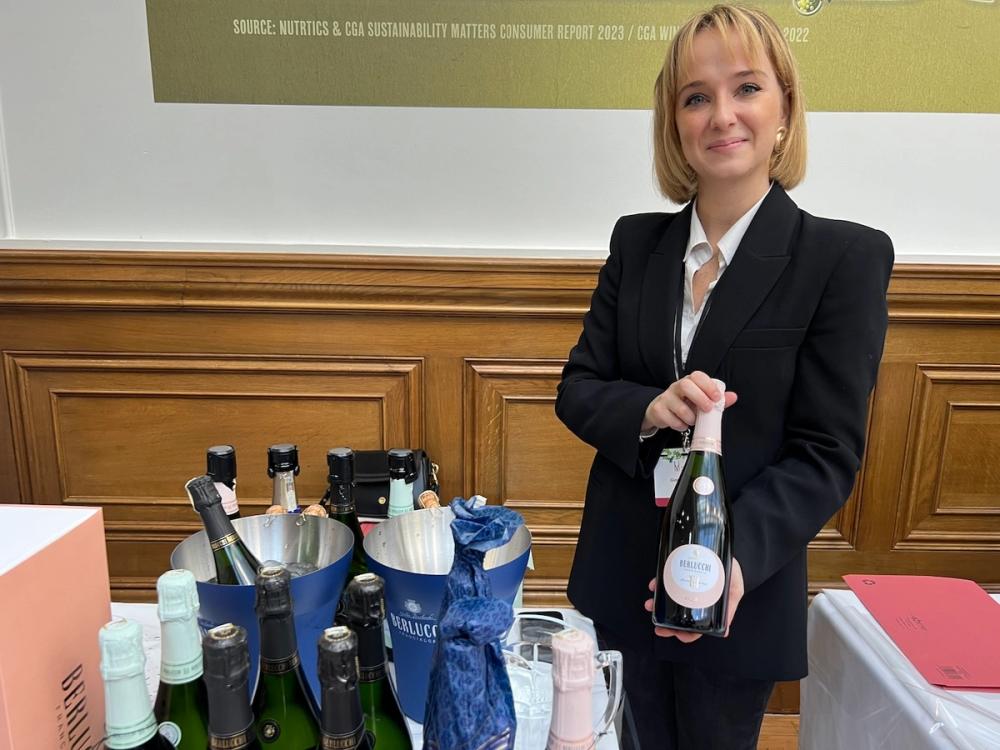
Giorgia Armanelli from Berlucchi with one of their four delectable Franciacortas
Hallgarten has an impressive range of sparkling but on the day it was the mineral-charged wines of Guido Berlucchi which stood out for me. Franciacorta might be a hard sell in the UK but there’s no reason to stop trying! Their range includes a Chard/ Pinot Noir Zero dosage, an NV 100% Chard Brut, a Rosé made from Pinot Nero but the truly outstanding cuvée is Franciacorta ‘Palazzo Lana Extreme’ Extra Brut Riserva 2011 (£69.17) which is from a single plot of 40-year-old Pinot Noir vines, 30-40% French oak, 10 years on the lees with 2-3 grams of residual sugar. Gorgeous layers of candied peel, peach and toasted nuts, sharp, focused, crisp and lively. Stunning.
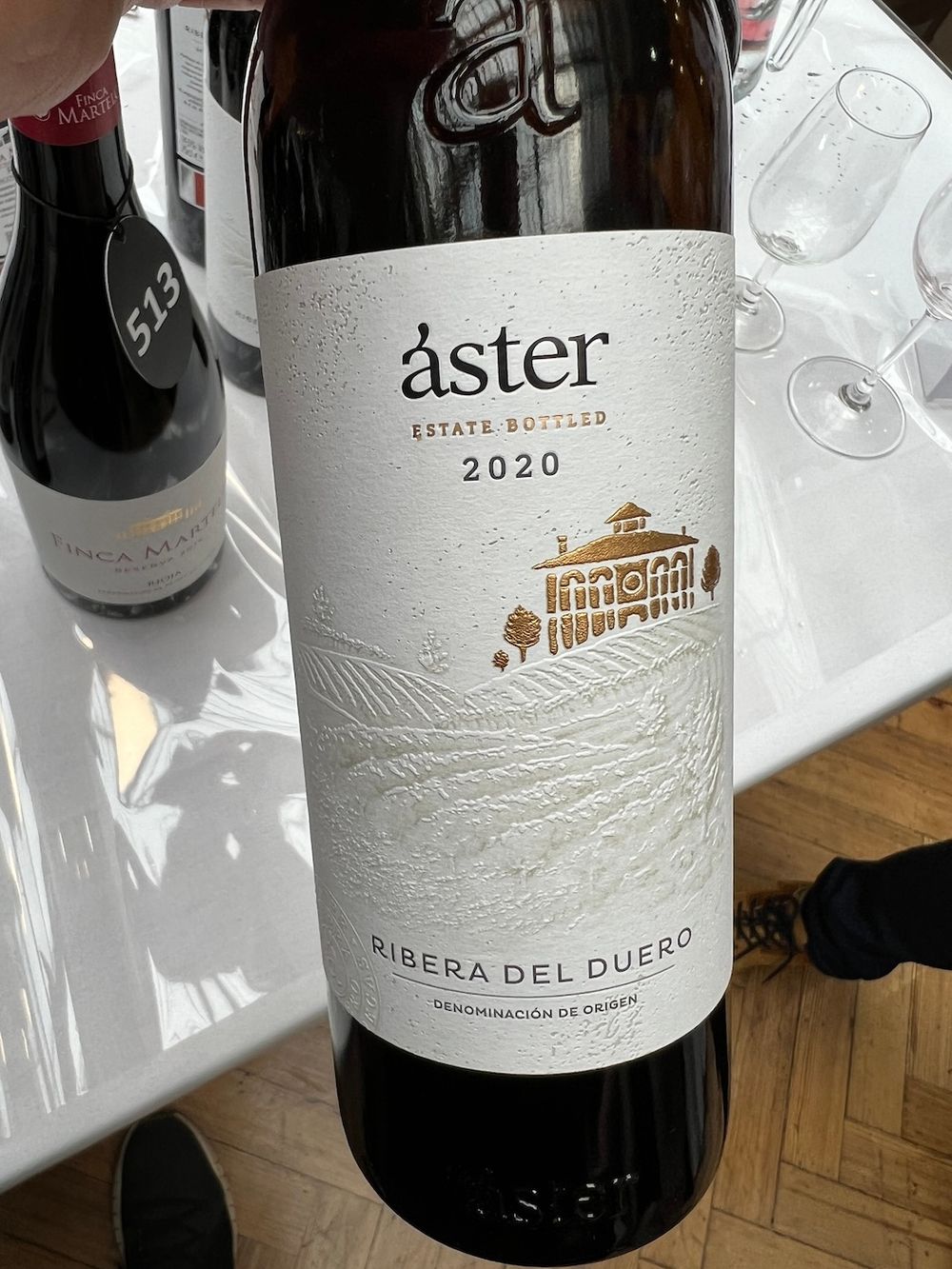
New look, new feel
La Rioja Alta’s table always has a fine range of Rioja, alongside its sister estates. The one wine which really does feel like it’s come on in leaps and bounds is the Crianza from Áster, its winery in Ribera del Duero, the 2020 was the new vintage (£22.69) and the wine is really benefitting from the reduced time in French oak (16 months down from 24) which was giving more power to the fruit, the acidity holding firm and, all in all, a winner for gastronomic uses.
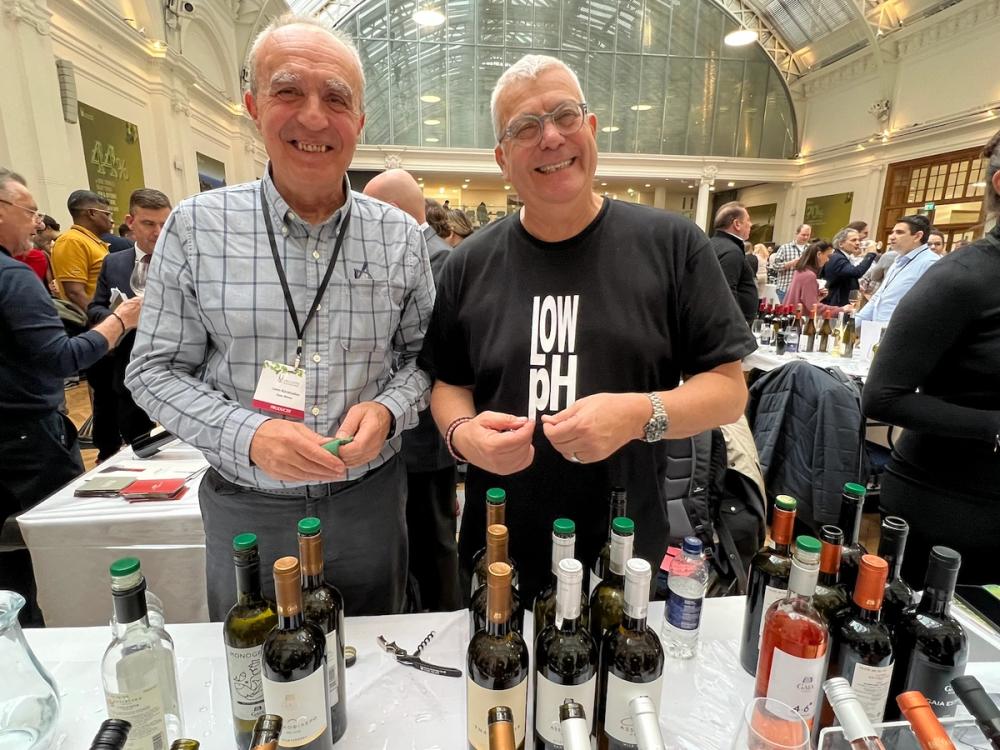
Bringing indigenous Greek varieties to you since 1994: Gaia’s Leon Karatsalos and Yiannis Paraskevopoulos – operating out of two wineries
I finish these recommendations at the Gaia Wines table with a terrific range including three individual Assyrtiko from Santorini, including an impressive Clay Orange Wine, an Assyrtiko from the mainland called Monograph (£14.04) which is more value-driven, a wonderful pine-resin charged ‘Retsina Nobilis’ 2022 (£13.51) and a powerhouse of a red in Gaia Estate Nemea 2020 (£32.72) which is 100% Agiorgitko from 45 year old vines, all estate grown fruit which spends 20 months in oak. Complex, rich with oodles of concentrated red and black fruit, black pepper and violet notes, this is a cracking example of modern Greek winemaking.
All prices in this feature are correct at time of ‘going to press’ and are Hallgarten trade prices ex-VAT.
Hallgarten & Novum is a commercial partner of The Buyer. To discover more about them click here.
